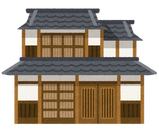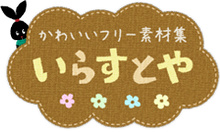Adjectives are words like 'big', 'little', 'fast', etc, that are used to describe things.
In the pictures above, the adjectives are 'kawaii' (cute) and 'dentouteki-na' (traditional). 'Kawaii' is an
い-adjective, and 'dentouteki-na' is a な-adjective.
In the pictures above, the adjectives are 'kawaii' (cute) and 'dentouteki-na' (traditional). 'Kawaii' is an
い-adjective, and 'dentouteki-na' is a な-adjective.
Let's review:
い-adjectives
- い-adjectives all end in い. The い ending can be taken off and replaced with other endings to add to the meaning. e.g, to change to the negative or to the past tense.
|
e.g.
ちいさい まち です。
まち が ちいさい です。
|
ちいさい まち じゃ ない です。
まち は ちいさく ない です。
|
い-adjectives, positive and negative:
|
ちいさい
|
ちいさく ない
|
な-adjectives
- な-adjectives have a な ending which is used to link the adjective to the noun that follows. However, we don't need to add な if there is no noun following the adjective.
NB: Although きれい kirei ends in い, it is NOT an い-adjective. Isn't grammar fun! :-)
|
e.g.
きれいな まち です。
まち が きれい です。
|
e.g.
きれいな まち じゃないです。
まち は きれい じゃ ない です。
|
な-adjectives, positive and negative:
|
きれい(な)
|
きれい じゃ ない
|




